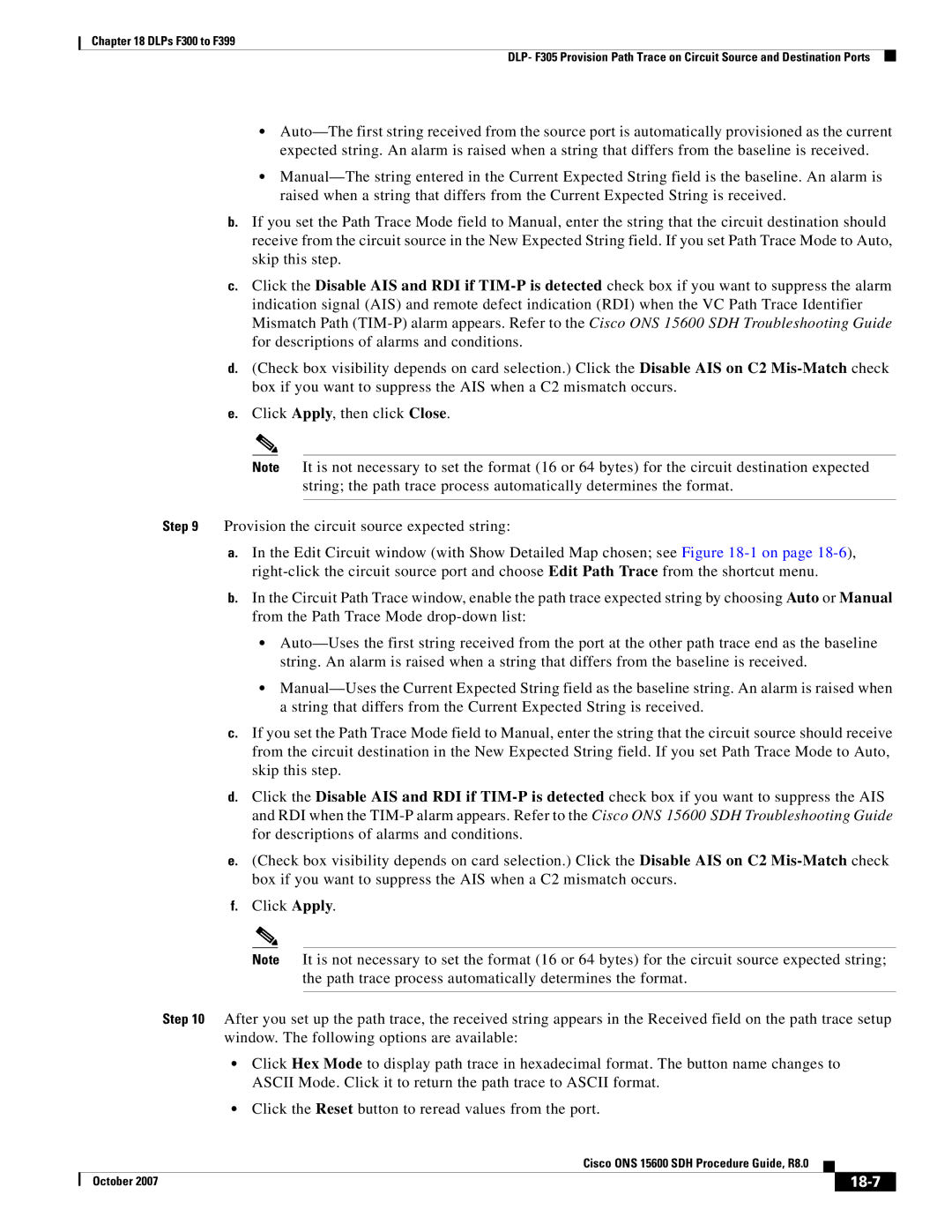
Chapter 18 DLPs F300 to F399
DLP- F305 Provision Path Trace on Circuit Source and Destination Ports
•
•
b.If you set the Path Trace Mode field to Manual, enter the string that the circuit destination should receive from the circuit source in the New Expected String field. If you set Path Trace Mode to Auto, skip this step.
c.Click the Disable AIS and RDI if
d.(Check box visibility depends on card selection.) Click the Disable AIS on C2
e.Click Apply, then click Close.
Note It is not necessary to set the format (16 or 64 bytes) for the circuit destination expected string; the path trace process automatically determines the format.
Step 9 Provision the circuit source expected string:
a.In the Edit Circuit window (with Show Detailed Map chosen; see Figure
b.In the Circuit Path Trace window, enable the path trace expected string by choosing Auto or Manual from the Path Trace Mode
•
•
c.If you set the Path Trace Mode field to Manual, enter the string that the circuit source should receive from the circuit destination in the New Expected String field. If you set Path Trace Mode to Auto, skip this step.
d.Click the Disable AIS and RDI if
e.(Check box visibility depends on card selection.) Click the Disable AIS on C2
f.Click Apply.
Note It is not necessary to set the format (16 or 64 bytes) for the circuit source expected string; the path trace process automatically determines the format.
Step 10 After you set up the path trace, the received string appears in the Received field on the path trace setup window. The following options are available:
•Click Hex Mode to display path trace in hexadecimal format. The button name changes to ASCII Mode. Click it to return the path trace to ASCII format.
•Click the Reset button to reread values from the port.
|
| Cisco ONS 15600 SDH Procedure Guide, R8.0 |
|
| |
|
|
| |||
| October 2007 |
|
|
|
|
|
|
|
| ||
